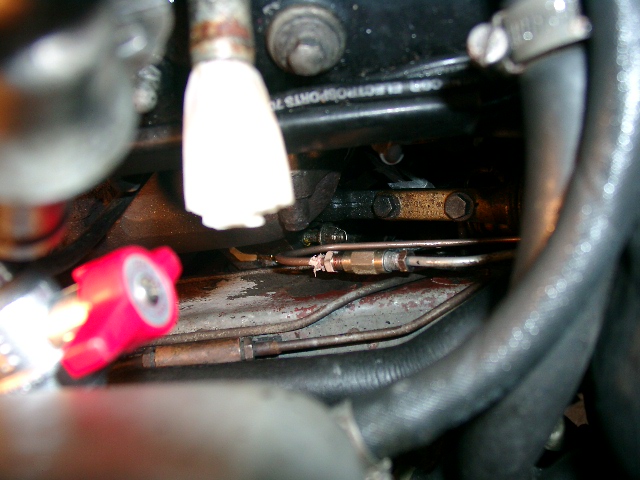| Author | Message | ||
Brian Vogel Prolific User Username: guyslp Post Number: 198 Registered: 6-2009 |
Since the content really has transitioned from how to straighten out bundy tubing and flare it in place to actually putting in a cunifer/EZ-Bend splice I decided to start a separate thread. There was no way to get a good shot of where the splice line is inserted to the UR14316 connector block, but I could get a decent photo of the brake line union with the splice line and original bundy tubing that's up top. The stuff you see on the one brake line nut is some masking tape that had a much better grip than I felt like fighting with:  And, now, if you rotate it 90 degrees left, a view from the front of the car:  Before calling it a day I got all of the various bits that I had to remove: stove pipe, grounding/earthing strap, etc., reinstalled and I believe the car is ready to be started to see if all this work has worked. Then it's time to flush and bleed the brake and height control systems. Brian | ||
Jeff Young Prolific User Username: jeyjey Post Number: 105 Registered: 10-2010 |
Hi Brian, The white/silver stuff on the bundy tubing nut: is that an aluminium-based anti-sieze or a PTFE paste? (I think I recall PTFE paste being a no-no for braking systems, due to the possibilities of floaters, but I can't remember where I heard that.) Cheers, Jeff. PS: a dentil pick will make quick work of that masking tape. | ||
Brian Vogel Prolific User Username: guyslp Post Number: 201 Registered: 6-2009 |
Jeff, The silvery stuff on the line nut on the old bundy tubing side is indeed antiseize compound. I now use this stuff on virtually any threaded item I assemble, including brake line nuts. Since the compound is in a spot that comes nowhere near to the actual sealing surfaces and fluid I do not worry about it. If I ever have to undo/redo something I make sure that the sealing surface of the flare and the connection are clean. Brian | ||
Jeff Young Prolific User Username: jeyjey Post Number: 106 Registered: 10-2010 |
Hi Brian, I think the anti-sieze is fine, even if it did come into contact with the sealing surfaces. (I use the stuff everywhere as well.) It's just the PTFE stuff that might (or might not) be an issue. Cheers, Jeff. | ||
Randy Roberson Frequent User Username: wascator Post Number: 82 Registered: 5-2009 |
Well, I would not want it to get into the brake system, but otherwise I think it will be OK. My experience with some brake line rework on my 1970 was that the nuts were rusty where the tubing passed through and it caused the nut to twist the tube off when I tried to remove it. I think though that the original tube was plated steel, and I went back with cunifer, so that, combined with the increased care HM nowgets,will preclude a repeat. If not, I considered the possibility of sealing the tube-nut interface with silicone during or immediately after assembly, to keep moisture out. As for the splice: as long as it is correctly assembled and doesn't leak, I don't see it as any different from any of the other many connections in the hydraulic-brake system. |